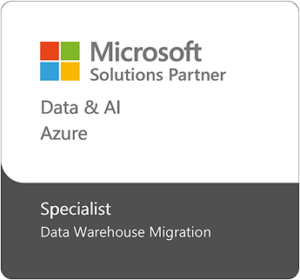Leading AI and ML Development Services
Transform your business operations with enterprise-grade artificial intelligence and machine learning solutions. As a leading AI services provider, Kanerika delivers tailored AI/ML consulting, intelligent automation, and implementation services that enable scalable growth, agile operations, and data-driven innovation.
Client satisfaction rate
Business tasks automated
Faster time-to-market
Get Started with AI and ML Solutions












AI Models Designed for Diverse Business Use Cases
From intelligent demand forecasting and dynamic pricing optimization to automated claims processing and supply chain efficiency, our AI models tackle complex business challenges across industries.
Sales Trends Forecasting
- Forecasts direct and indirect sales demand
- Predicts Wholesale Acquisition Cost (WAC) pricing
- Provides granular forecasts for products
Vendor Selection Advisory
- Streamlines vendor selection for transportation
- Considers parameters like origin, destination & quantity.
- Ranks vendors based on key metrics
Inventory Optimization
- Optimizes in-store inventory management
- Generates visual insights into ideal stocking levels
- Facilitates data-driven inventory decisions
Smart Product Pricing
- Analyzes product pricing and market trends
- Explores pricing variations and their impact
- Provides insights into smart pricing tactics
Logistics Route Optimizer
- Optimizes routes to multiple locations
- Prioritizes shipments to prevent stockouts/overstocking.
- Considers truck availability, capacity & location proximity
Claims Adjudicator Copilot
- Helps claims analysts with informed decision-making
- Utilizes past claims data to present similar cases
- Enhances efficiency and accuracy in claims processing
Enterprise AI Solutions Built for Production-Ready Deployment
Our artificial intelligence consulting and machine learning services deliver scalable, secure solutions that transform complex business challenges into automated, intelligent workflows, maximizing operational efficiency and competitive advantage.
ML and NLP Advanced Services
Our machine learning consulting and natural language processing capabilities empower domain experts to focus on strategic initiatives while AI handles routine tasks.
Highlights:
- Natural language processing (NLP) for intelligent document processing
- ML-powered conversational interfaces that streamline expert workflows
- Advanced text analytics for automated insights and knowledge discovery
AI Architecture & MLOps
Our MLOps expertise and AI governance services accelerate your ML lifecycle while establishing robust frameworks for responsible AI adoption and deployment:
Highlights:
- Scalable MLOps pipelines for rapid model deployment and continuous iteration
- AI governance frameworks and responsible AI policy implementation
- Automated ML model monitoring with enterprise-grade security protocols
AI Solutions & Engineering
Our bespoke AI solutions build tailored applications around your unique business requirements, delivering measurable impact through purpose-built models.
Highlights:
- Custom machine learning model design for complex business problems
- End-to-end AI solution development with system integration
- Strategic AI roadmap development and use case prioritization
AI Solutions That Deliver Measurable Value
Discover how our practical AI solutions create tangible business value. watch our technology solve real-world challenges, streamline operations, and drive growth through intelligent automation and data-driven insights.
Driving Real ROI: Our AI Transformation Stories
See how we empower enterprises to overcome operational hurdles and realize tangible value with customized AI and ML solutions designed for your unique business context.
Case Studies: AI Implementation Services
Learn how organizations maximize ROI, enhance productivity, and achieve sustained competitive advantage through strategic AI adoption and machine learning integration.
AI/ML & Gen AI
AI-Powered Dynamic Pricing for Luxury Product Lines
Impact:
- 24% Increase in Profit Margins on Top SKUs
- 39% Faster Price Change Cycle Time
- 100% Auditability of Pricing Decisions
AI/ML & Gen AI
AI Vision for Authenticity Verification and Loss Prevention
Impact:
- 95% High Accuracy in Counterfeit Detection
- 68% Faster Product Verification
- 100% Complete Product Traceability
AI/ML & Gen AI
AI-Powered Clienteling for Personalized In-Store and Online Experiences
Impact:
- 48% Faster Client Preparation
- 33% Higher Transaction Value
- 100% Complete Data Compliance
Maximize Your AI Investment with Our IMPACT Framework
At Kanerika, we leverage the IMPACT methodology to drive successful AI projects, focusing on delivering tangible outcomes.
AI/ML Development Technology Stack
We leverage industry-standard AI and machine learning tools and frameworks to deliver high-impact solutions tailored to enterprise needs.
INNOVATE
Diverse Industry Expertise

Banking
Use AI and ML to detect fraud, assess risk, and automate workflows, improving compliance, decision accuracy, and efficiency across digital banking.

Insurance
Apply AI and ML to automate claims, detect anomalies, and forecast risk, enhancing accuracy, cost control, and customer experience.

Logistics & SCM
Leverage AI and ML to forecast demand, optimize routes, and manage inventory, increasing visibility, speed, and cost efficiency

Manufacturing
Adopt AI and ML for predictive maintenance and process analytics, reducing downtime and improving production quality and efficiency.

Automotive
Use AI and ML for defect detection, production analytics, and forecasting, improving precision, reliability, and supply chain efficiency.

Pharma
Apply AI and ML to analyze trials, predict outcomes, and ensure compliance, accelerating research and improving drug quality.

Healthcare
Use AI and ML to predict diseases, enhance diagnostics, and optimize workflows, improving care delivery and operational efficiency.

Retail & FMCG
Leverage AI and ML for demand forecasting, price optimization, and personalization, driving sales growth and customer retention.
Why Choose Our AI and ML Services?
Trusted by leading organizations, our AI/ML expertise and commitment to innovation set us apart. Experience the transformative power of AI with a partner you can rely on.
Our AI/ML specialists deliver enterprise-ready solutions that combine deep industry expertise with advanced machine learning algorithms to achieve measurable business outcomes.

We align every AI/ML project to your specific business needs, ensuring seamless integration with existing systems and workflows through our custom implementation services.

We design scalable AI/ML platforms that evolve with market demands, driving operational efficiency and long-term business value through continuous innovation.

Empowering Alliances
Our Strategic Partnerships
The pivotal partnerships with technology leaders that amplify our capabilities, ensuring you benefit from the most advanced and reliable solutions.




Frequently Asked Questions (FAQs)
Think of AI as the bigger picture – it’s any technology that makes machines act smart. Machine learning? That’s the specific way we teach computers to get smarter by feeding them data. While AI includes everything from chess-playing programs to voice assistants, ML focuses on pattern recognition and predictions. It’s like teaching a child to recognize cats by showing them thousands of cat photos. Explore Kanerika’s AI and ML capabilities to see how these technologies transform business operations.
“Data is the new oil,” but only if you know how to refine it. ML systems analyze patterns in historical data like a detective examining clues. They identify relationships, trends, and anomalies that humans might miss. The system builds mathematical models based on past events, then uses these patterns to make predictions about future scenarios. Think of it as learning from experience – but at superhuman speed and scale. Discover how Kanerika harnesses data intelligence for predictive analytics solutions.
ML shines when you’re drowning in data but starving for insights. Perfect for predicting customer behavior, detecting fraud, optimizing supply chains, and automating repetitive decisions. If you find yourself saying “I wish I could predict…” or “This process takes forever to analyze,” ML might be your answer. It excels at finding patterns in complex datasets where traditional programming falls short. See real-world ML applications that drive measurable business impact.
Supervised learning is like having a tutor – you show the algorithm examples with correct answers. “This email is spam, this one isn’t.” Unsupervised learning? That’s more like independent study. The algorithm finds hidden patterns without being told what to look for. One discovers known relationships, the other uncovers surprises lurking in your data. Both approaches solve different business challenges depending on your goals. Explore Kanerika’s ML methodologies tailored to your specific use cases.
Features are the ingredients in your ML recipe – choose poorly, and even the best chef can’t save dinner. Training datasets provide the foundation for learning, but quality trumps quantity every time. Clean, relevant data with well-selected features creates accurate models. Garbage in, garbage out isn’t just a saying in ML – it’s the law. The art lies in identifying which data points actually matter for your specific business problem. Learn about Kanerika’s data preparation expertise for optimal model performance.
Healthcare predicts disease outbreaks. Finance detects fraud in milliseconds. Retail personalizes shopping experiences. Manufacturing prevents equipment failures. But here’s the truth – every industry benefits when AI solves real problems. The question isn’t whether your sector can use AI, but which specific challenges you want to tackle first. Early adopters in any field often gain the biggest competitive advantages. Discover AI solutions across industries that deliver tangible results.
Start with the problem, not the technology. Are you predicting numbers? Classification might work. Finding patterns in messy data? Try clustering. The business goal shapes the technical approach – not the other way around. Consider your data type, accuracy requirements, and interpretability needs. Sometimes a simple model that everyone understands beats a complex one that’s a black box. Explore model selection strategies that align with business objectives.
Poor data quality kills more AI projects than bad algorithms. Organizations often underestimate the effort needed for data preparation and change management. Technical teams build impressive models that business teams don’t trust or understand. Then there’s the “pilot purgatory” – endless proof-of-concepts that never reach production. Success requires aligning technical capabilities with business needs from day one. See how Kanerika addresses AI adoption challenges with proven implementation strategies.
Real-world data is messy – ML algorithms expect this. Techniques like data imputation fill gaps intelligently. Outlier detection identifies and handles anomalies. Feature engineering transforms noisy signals into useful patterns. The key is building robust preprocessing pipelines that clean data systematically. Smart algorithms can even learn which data points to trust and which to ignore. Think of it as teaching machines to see signal through the noise. Discover data quality solutions that ensure reliable ML outcomes.
The best models evolve with your business. Incremental learning updates models as new data arrives. Retraining schedules keep predictions current with changing patterns. Some systems adapt in real-time, others on scheduled intervals. The key is monitoring model performance and triggering updates when accuracy drifts. Think of it as continuous improvement for algorithms – they get smarter as your business grows. Explore adaptive AI solutions that evolve with your data landscape.
AI automates the tedious stuff humans hate doing anyway. Chatbots handle routine customer queries 24/7. Predictive maintenance prevents costly equipment failures. Automated data processing eliminates manual errors and reduces processing time by 80%. Smart scheduling optimizes resource allocation. The real savings come from freeing up skilled employees to focus on strategic work instead of repetitive tasks. One client saved $2M annually just by automating invoice processing. Discover cost optimization opportunities through intelligent automation.
Smart implementations typically see 15-30% productivity gains within the first year. But ROI varies wildly based on use case and execution quality. Customer service automation might save $500K annually, while predictive analytics could prevent millions in lost revenue. The key is starting with high-impact, low-complexity projects that deliver quick wins. Build momentum before tackling the moonshot projects. Explore ROI-focused AI strategies that deliver measurable business value.
Instead of waiting weeks for reports, executives get real-time insights. Sales teams spot opportunities as they emerge. Finance detects anomalies before they become problems. AI processes information at superhuman speed, surfacing trends and patterns instantly. The acceleration comes from turning data into actionable insights faster than traditional analysis methods. Decision quality improves when you have complete, current information instead of outdated snapshots. See how AI transforms decision-making across business functions.
Track business outcomes, not just technical metrics. Customer satisfaction scores matter more than model accuracy percentages. Revenue impact beats algorithm performance. Time-to-insight, cost reduction, and error rate improvements tell the real story. The best KPIs link AI performance directly to business goals. If your AI dashboard looks like a technical manual, you’re measuring the wrong things. Focus on metrics that matter to your bottom line. Discover performance measurement frameworks for AI success.
AI turns forecasting from guesswork into science. Sales prediction models analyze historical patterns, seasonal trends, and market indicators. They spot early warning signs when deals might slip or accelerate. Revenue teams get clearer pipeline visibility and more accurate quarterly projections. The magic happens when predictions become proactive – alerting teams to take action before problems occur. Think of it as a crystal ball with mathematical precision. Explore revenue forecasting solutions that improve predictability.
Traditional forecasting uses human intuition and spreadsheet models. ML analyzes thousands of variables simultaneously, identifying subtle patterns humans miss. It adapts to changing market conditions automatically. Weather, economic indicators, competitor actions – ML considers everything. Accuracy improvements of 20-40% are common when switching from traditional to ML-based forecasting. The algorithms learn from prediction errors, getting smarter with each forecast cycle. See forecasting transformation examples across industries.
Analysts spend 80% of their time preparing data and only 20% analyzing it. AI flips this equation. Automated data cleaning, report generation, and pattern detection free analysts for strategic thinking. Instead of building spreadsheets, they interpret insights and recommend actions. Teams can focus on asking better questions rather than crunching numbers. The result? Higher job satisfaction and better business outcomes. Discover analyst productivity solutions that amplify human intelligence.
Look for problems that are repetitive, data-rich, and expensive when done manually. Customer service inquiries, fraud detection, and supply chain optimization top the list. Start where you have good historical data and clear success metrics. The sweet spot combines high business impact with achievable technical complexity. Avoid vanity projects that impress but don’t deliver. Focus on use cases where AI can create measurable competitive advantage. Explore use case identification strategies for maximum impact.
Customers get instant answers instead of waiting in phone queues. Personalized recommendations feel like having a personal shopper. AI predicts customer needs before they express them. Support issues get routed to the right expert immediately. The experience becomes proactive rather than reactive – solving problems customers didn’t know they had. Response times drop from hours to seconds, satisfaction scores climb accordingly. See customer experience innovations powered by AI.
AI isn’t just another technology – it’s the engine that powers digital transformation. It connects data silos, automates manual processes, and enables new business models. Smart organizations use AI to reimagine operations, not just optimize existing ones. The transformation happens when AI becomes embedded in decision-making processes across the enterprise. It’s the difference between digitizing paperwork and creating entirely new ways of working. Explore transformation roadmaps that leverage AI strategically.
Modern AI stacks combine cloud platforms, data lakes, and specialized ML frameworks. Think of it as a sophisticated kitchen – you need the right appliances, ingredients, and recipes. Core components include data storage (cloud warehouses), processing power (GPU clusters), and ML platforms (TensorFlow, PyTorch). Container orchestration handles scaling. The magic happens when these pieces work seamlessly together, creating an environment where AI models can thrive and evolve. Discover enterprise AI architectures designed for scalability.
Data pipelines are like assembly lines for information. Raw data enters messy and unstructured. It gets cleaned, transformed, and enriched at each stage. Quality checks ensure accuracy. Automated workflows handle the heavy lifting so data scientists focus on model development instead of data wrangling. Good pipelines run 24/7, feeding models fresh, clean data continuously. Without solid pipelines, even brilliant algorithms fail spectacularly. Explore data pipeline solutions that power reliable ML operations.
Cloud platforms are the great equalizer for AI. Small companies access the same computing power as tech giants. Need massive GPU clusters for training? Spin them up in minutes, pay only for usage. Auto-scaling handles traffic spikes automatically. Global deployment becomes point-and-click simple. The economics work because you’re renting supercomputer time instead of buying it. Cloud democratizes AI by removing infrastructure barriers. See cloud AI deployment strategies that optimize performance and costs.
Real-time predictions are like having a conversation – immediate responses matter. Fraud detection, chatbots, and dynamic pricing need millisecond responses. Batch processing is more like overnight delivery – perfectly fine for monthly reports or customer segmentation. The choice depends on your business needs. Real-time costs more but enables interactive applications. Batch processing handles larger datasets efficiently. Smart architectures use both approaches where appropriate. Explore prediction deployment options for different business scenarios.
Training is like teaching someone to drive in an empty parking lot. Deployment is letting them loose on the highway during rush hour. Training environments are controlled and forgiving. Production environments are chaotic and unforgiving. Deployment requires monitoring, scaling, security, and backup plans. Models that work perfectly in training might crash spectacularly in production. The gap between “it works on my laptop” and “it works for millions of users” is where most AI projects fail. Learn deployment best practices for production success.
Model drift is when your AI gradually becomes less accurate over time. Like a clock that runs slow – barely noticeable at first, but eventually useless. Customer behavior changes, market conditions shift, data patterns evolve. The model, trained on historical data, becomes outdated. Detection involves monitoring prediction accuracy, data distribution changes, and business metrics. Automated alerts trigger when performance drops below thresholds. Regular retraining keeps models current and accurate. Discover drift detection solutions that maintain model performance.
CPUs are like brilliant professors – great at complex reasoning but slow at repetitive tasks. GPUs are like armies of calculators – each one simple but incredibly fast when working together. ML training involves millions of mathematical operations that GPUs handle in parallel. What takes days on CPUs finishes in hours on GPUs. The acceleration enables more complex models and faster experimentation. It’s the difference between sending one letter at a time versus broadcasting to thousands simultaneously. Explore GPU-accelerated solutions for faster AI development.
Feature engineering is the art of helping algorithms see patterns clearly. Raw data might show “customer bought bread on Tuesday.” Feature engineering creates insights like “customer shops for family meals weekly.” Good features make the difference between mediocre and exceptional model performance. It’s about transforming data into the format where algorithms can spot meaningful relationships. Sometimes the simplest transformations yield the biggest improvements. Domain expertise matters more than technical complexity. Learn feature engineering techniques that boost model accuracy.
Modern ML development resembles software engineering – you need organized workflows and reproducible results. MLflow tracks experiments, comparing different model versions and parameters. Git manages code changes. Container registries store model artifacts. Think of it as a laboratory notebook that never gets lost. Teams can reproduce successful experiments and avoid repeating failed ones. Version control prevents the nightmare of “which model are we actually using in production?” Discover ML development tools for organized workflows.
MLOps bridges the gap between data science and production systems. It’s like having a skilled project manager for your AI initiatives. Automated testing, deployment pipelines, and monitoring reduce manual errors. Teams can move from prototype to production faster and more reliably. Models get updated systematically instead of ad-hoc. The result is more reliable AI systems that actually deliver business value. MLOps transforms AI from science experiment to business tool. Explore MLOps implementation for scalable AI operations.
Data security isn’t an afterthought – it’s built into every step of the process. Encryption protects data in transit and at rest. Access controls ensure only authorized personnel can view sensitive information. Anonymization techniques remove personally identifiable details while preserving analytical value. Audit trails track every data access. Secure computing environments isolate training workloads from other systems. The goal is extracting insights without compromising privacy. Think of it as learning patterns without reading diary entries. Explore secure AI solutions that protect sensitive data.
Well-designed AI systems follow data minimization principles – they keep only what’s necessary for functionality. Personal details get processed and discarded, leaving only statistical patterns. Think of it like a restaurant critic who remembers “the pasta was excellent” but forgets which customer ordered it. Retention policies define how long data stays in the system. Compliance requirements often dictate specific timelines. The key is balancing business needs with privacy obligations. Discover privacy-compliant AI architectures that respect customer data.
Not everyone needs access to everything. Data scientists might see aggregated patterns but not individual records. Business analysts get dashboard access but can’t modify models. System administrators manage infrastructure but can’t view training data. Role-based access control creates layers of protection. Multi-factor authentication adds extra security. Activity monitoring tracks who accessed what and when. The principle is simple: minimum necessary access for each role. Learn access control best practices for secure ML environments.
GDPR governs AI systems processing European data. HIPAA applies to healthcare AI applications. SOX affects financial AI systems. Industry-specific regulations add more layers. But compliance isn’t just about avoiding fines – it’s about building trust with customers and stakeholders. Standards provide frameworks for responsible AI development. They ensure algorithms make fair, explainable decisions. Compliance becomes a competitive advantage when customers trust your AI more than competitors’. Explore compliance frameworks for regulated industries.
AI decisions need paper trails just like human decisions. Audit logs capture input data, model versions, and prediction outputs. Explainable AI techniques show why models made specific predictions. Regular accuracy assessments ensure models perform as expected. Bias testing checks for unfair discrimination. Version control tracks model changes over time. Think of it as maintaining a detailed medical chart for your algorithms. Audibility builds confidence in AI-driven decisions. Discover audit solutions for transparent AI operations.
Bias creeps in through historical data, algorithm design, and feature selection. Diverse training datasets help models learn fair patterns. Regular bias testing reveals discriminatory behavior. Explainable AI shows when models make decisions based on protected characteristics. Human oversight reviews high-stakes predictions. Fairness metrics quantify equitable outcomes across different groups. The goal is AI that treats everyone fairly, regardless of background. Bias mitigation is an ongoing process, not a one-time fix. Learn bias mitigation strategies for fair AI systems.
Data isolation keeps sensitive information in secure containers. Network segmentation prevents unauthorized access between systems. Encrypted connections protect data in transit. Regular vulnerability scans identify potential security gaps. Employee training reduces human error risks. Monitoring systems detect unusual access patterns. Think of it as building multiple firewalls around your most valuable data. The layered approach ensures that if one control fails, others provide protection. Explore data protection strategies for secure AI pipelines.
Privacy-preserving techniques extract insights without exposing individual identities. Differential privacy adds statistical noise that protects individuals while preserving overall patterns. Synthetic data generation creates realistic but fake records for training. Federated learning trains models without centralizing sensitive data. Anonymization removes direct identifiers. The goal is learning from collective behavior without compromising individual privacy. It’s like studying crowd behavior without following specific people. Discover privacy-preserving techniques for responsible AI development.
Responsible AI starts with clear principles and ends with consistent enforcement. Ethics committees review AI projects for potential harm. Impact assessments evaluate societal implications. Testing protocols ensure fairness and accuracy before deployment. Incident response plans handle AI failures gracefully. Regular audits verify ongoing compliance. Governance isn’t about slowing down AI – it’s about building sustainable, trustworthy systems. Think of it as quality control for algorithms that affect real people’s lives. Learn AI governance frameworks for ethical deployment.
Validation is like test-driving a car before buying it. Hold-out datasets test model performance on unseen data. Cross-validation ensures results aren’t just lucky accidents. A/B testing compares AI predictions with existing methods. Shadow mode runs new models alongside current systems without affecting operations. Performance benchmarks set minimum accuracy thresholds. User acceptance testing verifies business value. Multiple validation layers catch problems before they reach customers. Explore validation methodologies that ensure reliable AI systems.
Simple projects might take 2-3 months from start to finish. Complex enterprise implementations can span 6-12 months. The timeline depends on data availability, technical complexity, and organizational readiness. Proof-of-concept phases usually last 4-6 weeks. Then comes the heavy lifting – data preparation, model development, and integration testing. Deployment isn’t the finish line; it’s when real optimization begins. Smart organizations start small, learn fast, and scale gradually. Discover implementation roadmaps tailored to your timeline needs.
Start with the business problem, then work backward to data requirements. Want to predict customer churn? You’ll need purchase history, support interactions, and usage patterns. The key is identifying which data actually influences the outcome you’re trying to predict. More data isn’t always better – relevant data is. Sometimes the most valuable insights come from external datasets you didn’t know existed. Think of it as assembling puzzle pieces to see the bigger picture. Learn data strategy approaches for successful AI projects.
Data preparation is like cooking – you spend most time prepping ingredients, not actual cooking. First, collect data from various sources. Then clean it by removing duplicates, fixing errors, and handling missing values. Transform data into consistent formats. Create features that help algorithms spot patterns. Split datasets for training, validation, and testing. Quality checks ensure everything looks right before training begins. Good preparation prevents garbage-in-garbage-out scenarios. Explore data preparation services that ensure model success.
Prebuilt models are like buying a car – fast, reliable, but limited customization. Custom models are like building your own – exactly what you need, but more time and effort. Use prebuilt for common problems like language translation or image recognition. Go custom when your business needs are unique or when competitive advantage matters. Consider your timeline, budget, and technical resources. Sometimes a hybrid approach works best – start prebuilt, customize later. Compare model options for your specific requirements.
You don’t need a PhD in computer science to benefit from AI. Many organizations start with low-code/no-code tools and managed services. The key is having someone who understands your business problems well enough to guide AI implementation. Technical partners can handle the complex stuff while you focus on business value. Think of it like hiring a contractor – you need to know what you want built, but not how to use every power tool. Learn about AI expertise requirements for different adoption levels.
Testing AI is more art than science. Start with historical data – can the model predict known outcomes accurately? Then try edge cases and unusual scenarios. Business users should validate that AI recommendations make sense. Gradual rollouts test performance under real conditions. Monitor everything – accuracy, speed, resource usage, user satisfaction. Have rollback plans ready when things go wrong. Think of it as quality control for algorithms that affect real business decisions. Discover testing methodologies that ensure reliable deployments.
Modern ML infrastructure is mostly cloud-based and scalable. You need storage for large datasets, computing power for model training, and reliable networks for real-time predictions. Container platforms handle deployment and scaling automatically. Monitoring tools track performance and detect issues. The good news? You can rent world-class infrastructure instead of building it. Start small and scale as needed. Cloud providers handle the complexity while you focus on business value. Explore infrastructure solutions for different scale requirements.
Integration success depends on making AI feel natural within current processes. APIs connect models to existing applications. Dashboards display AI insights alongside traditional reports. Workflows get enhanced, not replaced. Users should barely notice the AI working behind the scenes. Change management helps teams adapt to AI-enhanced processes. The goal is augmenting human decision-making, not replacing it. Good integration makes AI feel inevitable rather than foreign. Learn integration strategies that minimize disruption.
Pilots prove concepts; scaling delivers value. Start with high-impact, low-risk use cases that build credibility. Document everything – what works, what doesn’t, and why. Build reusable components that accelerate future projects. Create centers of excellence that share knowledge across teams. Invest in training and change management. Plan for increased data volumes and user loads. Think of scaling as transitioning from prototype to production system. Success requires technical excellence and organizational readiness. Discover scaling strategies for enterprise AI adoption.
Model maintenance is like car maintenance – ignore it at your peril. Monitor prediction accuracy continuously. Track data quality and distribution changes. Set up alerts for performance degradation. Schedule regular model updates and retraining. Have incident response plans for when models fail. Document everything for troubleshooting and compliance. The goal is catching problems before they affect business operations. Proactive maintenance prevents small issues from becoming big problems. Explore maintenance frameworks for reliable AI operations.
Traditional sales forecasting relies on gut instinct and historical averages. AI considers hundreds of variables – deal size, customer behavior, market conditions, even weather patterns. It spots early warning signs when deals might slip and identifies opportunities for acceleration. Sales teams get more accurate quarterly projections and better pipeline visibility. The magic happens when predictions become actionable – telling you not just what will happen, but what to do about it. Explore sales AI solutions that improve forecast accuracy.
Finance teams drown in spreadsheets but starve for insights. ML automates routine analysis, freeing analysts for strategic work. Fraud detection catches suspicious transactions in real-time. Risk models evaluate credit applications instantly. Automated reporting reduces month-end closing time by days. Pattern recognition spots cost-saving opportunities human analysts miss. The transformation turns finance from scorekeeper to strategic advisor. Numbers become stories that guide business decisions. Discover finance AI applications that enhance analytical capabilities.
Supply chains are complexity machines with thousands of moving parts. AI optimizes routing, predicts demand spikes, and identifies bottlenecks before they cause delays. Automated procurement adjusts orders based on real-time consumption. Quality control systems spot defects that human inspectors miss. Predictive maintenance prevents costly equipment failures. The result? Smoother operations, lower costs, and happier customers. AI handles the routine stuff so humans focus on strategic decisions. See operational AI solutions that streamline complex processes.
Forget basic demographics – AI creates hyper-specific customer segments based on behavior patterns. It identifies customers likely to churn before they know it themselves. Personalization engines deliver the right message at the perfect moment. Price optimization finds the sweet spot between profit and conversion. Marketing campaigns become surgical strikes rather than carpet bombing. Customer lifetime value predictions guide retention investments. The goal is treating each customer as a segment of one. Explore customer intelligence solutions for targeted marketing.
Anomaly detection is like having a security guard who never sleeps. ML models learn normal patterns, then flag anything unusual. Credit card fraud detection spots suspicious transactions in milliseconds. Network monitoring catches security breaches before damage occurs. Manufacturing sensors identify equipment problems before failures happen. The key is separating real threats from false alarms. Good anomaly detection systems learn what’s truly unusual versus just different. Discover anomaly detection capabilities for proactive monitoring.
Vendor selection traditionally involves spreadsheets, reference calls, and educated guesses. AI analyzes performance history, financial stability, and risk factors across thousands of suppliers. It spots red flags human evaluators miss and identifies undervalued vendors others overlook. Real-time scoring adjusts as vendor performance changes. Procurement becomes data-driven rather than relationship-driven. The best vendors rise to the top based on actual performance, not just good presentations. Learn vendor intelligence solutions for smarter procurement.
HR teams often make people decisions with limited data. AI predicts which employees might leave, identifies high performers, and spots skill gaps before they become problems. Recruitment algorithms match candidates to roles more accurately than traditional screening. Performance prediction helps with succession planning and development investments. The goal isn’t replacing human judgment but enhancing it with data-driven insights. People decisions become more objective and fair. Explore workforce analytics that enhance talent management.
Risk management often relies on backward-looking reports and periodic assessments. Predictive models identify emerging risks before they materialize. Compliance monitoring becomes real-time rather than periodic. Anti-money laundering systems catch suspicious patterns that traditional rules miss. Credit risk assessment becomes more accurate and fair. Regulatory reporting gets automated, reducing errors and manual effort. Risk teams shift from reactive to proactive, preventing problems instead of cleaning up afterward. Discover risk AI solutions for proactive compliance.
Inventory management is a delicate balance – too little causes stockouts, too much ties up capital. AI predicts demand more accurately than traditional forecasting. It optimizes reorder points and safety stock levels automatically. Seasonal patterns, promotions, and external factors all influence recommendations. Dead stock identification prevents capital waste. Dynamic pricing helps clear excess inventory profitably. The result is better service levels with lower carrying costs. See inventory optimization solutions that improve working capital.
Executive dashboards often show yesterday’s news when executives need today’s insights. AI processes data streams continuously, surfacing important trends as they emerge. Automated reports highlight key changes and anomalies. Natural language generation explains complex data in plain English. Exception reporting focuses attention on what really matters. Mobile alerts ensure critical information reaches executives anywhere. The transformation turns executives from information consumers to insight-driven decision makers. Explore executive intelligence solutions for strategic advantage.
Claims processing traditionally takes weeks and armies of adjusters. AI reviews claims in minutes, comparing damage photos with historical patterns. It identifies inconsistencies that suggest fraud while fast-tracking legitimate claims. Natural language processing extracts key details from unstructured reports. Risk scoring prioritizes complex cases for human review. Simple claims get approved automatically, reducing processing time from weeks to hours. Customer satisfaction improves while operational costs plummet. Discover insurance AI solutions that transform claims operations.
Insurance fraud costs billions annually, but AI is fighting back. ML models spot suspicious patterns humans miss – multiple claims for the same incident, unusual claim timing, or inconsistent damage descriptions. They analyze social media posts, cross-reference databases, and flag unusual behavior patterns. The key is catching fraud without harassing legitimate customers. Good fraud detection systems learn continuously, adapting to new fraud techniques. False positive rates drop while fraud detection rates climb. Explore fraud detection capabilities for insurance companies.
Traditional underwriting relies on limited data points and human judgment. AI considers hundreds of variables – driving records, credit scores, social media activity, even satellite imagery of properties. Risk assessment becomes more accurate and fair. Processing time drops from days to minutes. Competitive pricing improves when risk models are more precise. The goal is offering the right price to the right customer at the right time. Learn underwriting AI solutions that enhance risk assessment.
Effective insurance forecasting combines internal claims data with external factors. Historical loss data provides the foundation. Weather patterns predict catastrophic events. Economic indicators influence claim frequency. Demographic trends affect risk profiles. Social media sentiment can predict behavioral changes. Telematics data from connected devices provides real-time risk insights. The art is identifying which external factors actually influence insurance outcomes. Discover data integration strategies for comprehensive forecasting.
Policy servicing often feels like navigating a bureaucratic maze. AI-powered chatbots answer common questions instantly. Document processing extracts key information automatically. Policy changes get processed without human intervention. Predictive analytics identifies customers who might need additional coverage. Claims status updates happen automatically. The experience becomes self-service for simple transactions while complex issues get routed to skilled agents immediately. Explore customer service AI that improves satisfaction.
Logistics companies juggle thousands of variables – seasonal patterns, weather events, economic conditions, even social media trends. Traditional forecasting often misses the mark, leading to capacity shortages or expensive overcapacity. AI considers everything simultaneously, predicting demand spikes before they happen. Route planning becomes proactive rather than reactive. Capacity allocation optimizes automatically. The result is better service levels with lower operational costs. See demand forecasting solutions for logistics efficiency.
Route optimization is a complex puzzle with millions of possible solutions. ML considers traffic patterns, delivery windows, vehicle capacity, driver schedules, and fuel costs simultaneously. Dynamic routing adjusts for real-time conditions – accidents, weather, urgent deliveries. Fleet utilization improves when algorithms match vehicles to routes optimally. Fuel costs drop, delivery times improve, and customer satisfaction climbs. The magic happens when routes adapt automatically to changing conditions. Explore routing optimization that reduces logistics costs.
Supply chain disruptions often cascade through networks, causing widespread problems. AI monitors thousands of signals – supplier financial health, geopolitical events, weather patterns, transportation delays. Early warning systems alert managers before disruptions impact operations. Alternative sourcing recommendations provide backup options automatically. Risk scores help prioritize mitigation efforts. The goal is turning reactive fire-fighting into proactive risk management. Discover disruption prevention strategies for resilient supply chains.
Warehouses are complex ecosystems where location matters as much as quantity. ML optimizes product placement based on picking frequency and seasonal patterns. Demand forecasting ensures popular items stay in stock without overordering slow movers. Automated reordering maintains optimal inventory levels. Labor scheduling matches staffing to predicted workloads. The result is faster order fulfillment with lower carrying costs. Space utilization improves when algorithms optimize storage layouts continuously. Learn warehouse optimization techniques that boost efficiency.
Supply chain visibility traditionally means spreadsheet reports that are outdated by the time you read them. AI creates real-time dashboards that show exactly what’s happening across the network. Predictive analytics forecasts potential problems before they occur. Exception reporting highlights issues that need immediate attention. End-to-end tracking provides complete shipment visibility. Performance analytics identify optimization opportunities. The transformation turns supply chains from black boxes into transparent, manageable networks. Explore visibility solutions for supply chain transparency.
Equipment failures cost manufacturers millions in downtime and emergency repairs. Predictive maintenance monitors machine health continuously, spotting problems before failures occur. Vibration patterns, temperature readings, and performance metrics create early warning systems. Maintenance schedules optimize automatically based on actual equipment condition rather than arbitrary time intervals. Spare parts inventory adjusts to predicted failure patterns. The result is higher equipment availability with lower maintenance costs. Discover predictive maintenance solutions that prevent costly failures.
Quality control traditionally relies on human inspectors and random sampling. Computer vision systems inspect every product at production speed. They spot defects human eyes miss – micro-cracks, color variations, dimensional inconsistencies. Real-time feedback adjusts production parameters before defect rates climb. Root cause analysis traces quality problems to specific machines or processes. Customer complaints drop while production efficiency climbs. The goal is building quality into the process rather than inspecting it afterward. Explore quality control AI that ensures consistent quality.
Manufacturing downtime is expensive – every minute of stoppage costs money. AI prevents problems before they cause downtime. Production optimization reduces material waste automatically. Energy management cuts utility costs without affecting output. Yield optimization maximizes output from raw materials. Process optimization identifies bottlenecks that limit throughput. The cumulative effect transforms manufacturing from reactive to proactive operations. Small improvements compound into significant competitive advantages. Learn waste reduction strategies that boost profitability.
Production scheduling is a complex optimization problem with multiple constraints – machine capacity, material availability, labor schedules, delivery commitments. AI considers everything simultaneously, creating optimal schedules automatically. Dynamic rescheduling adapts to disruptions – machine breakdowns, rush orders, material delays. Capacity planning optimizes resource utilization across multiple production lines. The result is higher throughput with better delivery performance. Planners focus on strategic decisions while AI handles tactical optimization. Discover scheduling optimization for manufacturing efficiency.
Modern factories generate massive amounts of sensor data – temperatures, pressures, vibrations, speeds. Anomaly detection identifies patterns that predict equipment problems. Normal operating ranges adjust automatically as machines age or operating conditions change. Early warning systems alert operators before minor issues become major failures. Diagnostic insights help maintenance teams understand root causes quickly. The key is separating real problems from normal operational variations. Explore sensor analytics that optimize equipment performance.
Automotive quality standards are unforgiving – a single defect can trigger massive recalls. AI-powered inspection systems check every component at assembly line speed. Paint finish quality, weld integrity, and dimensional accuracy get verified automatically. Statistical process control identifies quality trends before they become problems. Supplier quality monitoring ensures incoming parts meet specifications. Traceability systems track every component through the entire production process. Zero-defect manufacturing becomes achievable when AI augments human quality expertise. Discover automotive quality solutions that prevent recalls.
Automotive supply chains span continents and involve thousands of suppliers. ML optimizes supplier selection based on cost, quality, and delivery performance. Demand forecasting considers model launches, marketing campaigns, and seasonal patterns. Risk assessment identifies suppliers vulnerable to disruptions. Logistics optimization coordinates parts delivery with production schedules. The goal is having the right parts at the right place at the right time. Just-in-time manufacturing succeeds when supply chains operate with clockwork precision. Learn supply chain optimization for automotive efficiency.
Automotive production involves complex sequences – paint booths, assembly lines, quality checkpoints. AI optimizes production schedules considering color change costs, option mix constraints, and delivery commitments. Capacity planning balances production across multiple plants and shifts. Dynamic scheduling adapts to disruptions without missing customer deliveries. Resource optimization ensures equipment and labor utilization stays high. The result is higher throughput with better customer service. Explore production optimization that maximizes manufacturing efficiency.
Early defect detection saves millions in warranty costs and protects brand reputation. ML analyzes test data patterns that predict field failures. In-process monitoring catches quality issues before they affect finished vehicles. Supplier quality analytics identify parts that might cause problems. Predictive warranty models forecast which components need attention. The key is catching problems in the factory instead of the customer’s driveway. Prevention costs pennies compared to recalls. Discover defect prediction systems that protect quality.
Automotive demand patterns are complex – seasonal variations, model lifecycles, marketing impacts, economic conditions. Traditional forecasting often misses these nuances, leading to stockouts or excess inventory. AI considers hundreds of variables simultaneously, creating more accurate demand predictions. Parts planning optimizes inventory across the entire network. Service parts forecasting ensures dealerships have what customers need. Logistics planning coordinates parts flow with production requirements. See forecasting solutions that optimize automotive operations.
Sales forecasting becomes complex when you’re tracking multiple channels and customer types. Our AI model analyzes direct sales patterns while considering indirect channel influences – distributor performance, partner sales activities, and market dynamics. Historical data reveals seasonal trends, promotional impacts, and economic sensitivities. The model distinguishes between different sales streams and their unique patterns. Cross-channel effects get factored into predictions, providing a comprehensive view of total market performance. Explore our sales forecasting capabilities for complete revenue visibility.
Pricing history tells fascinating stories about customer behavior and market dynamics. Our forecasting model analyzes how price changes affected sales volumes across different customer segments. It identifies price elasticity patterns – which products are sensitive to price changes and which aren’t. Competitive pricing impacts get measured and incorporated into future predictions. Promotional pricing effects are isolated from baseline demand trends. The result is forecasting that considers both volume and pricing scenarios. Discover pricing-aware forecasting that optimizes revenue strategies.
Weighted Average Cost (WAC) pricing requires understanding complex market dynamics and cost structures. Our ML model analyzes procurement patterns, supplier pricing trends, and inventory movements to predict future WAC levels. Market volatility gets factored into uncertainty estimates. Seasonal cost variations are identified and projected forward. The model learns from pricing errors, continuously improving accuracy. Supply chain disruptions and their cost impacts are incorporated into predictions. Learn about WAC forecasting solutions that improve pricing strategy.
Markets change constantly – new competitors, economic shifts, regulatory changes, technology disruptions. Our adaptive forecasting models detect these changes automatically and adjust predictions accordingly. Pattern recognition identifies when historical relationships no longer apply. Model weights update as new data reveals changing market dynamics. Alert systems notify when forecasts need human review due to unusual market conditions. The goal is maintaining accuracy even when markets behave unpredictably. Explore adaptive forecasting systems that handle market volatility.
Forecast validation requires comparing predictions with actual outcomes systematically. Our systems track forecast accuracy across different time horizons, products, and market segments. Bias analysis reveals whether forecasts consistently over or under-predict. Confidence intervals help users understand prediction uncertainty. Rolling accuracy metrics show improving or degrading model performance. A/B testing compares AI forecasts with traditional methods. The key is continuous improvement based on forecast performance feedback. Discover validation frameworks that ensure reliable predictions.
Vendor evaluation traditionally focuses on price and basic capabilities. Our AI model considers comprehensive logistics factors – delivery performance, geographic proximity, capacity constraints, and service quality metrics. Transportation costs get calculated for different vendor scenarios. Lead time variability is factored into reliability scores. Warehouse proximity influences total cost calculations. Risk assessment considers vendor financial stability and operational resilience. The result is vendor recommendations that optimize total cost, not just purchase price. Explore vendor intelligence solutions for smart procurement.
Vendor ranking involves balancing multiple, sometimes conflicting criteria. Our model weighs cost competitiveness, quality performance, delivery reliability, and service responsiveness. Historical performance data provides objective scoring. Risk factors include financial stability, geographic concentration, and dependency levels. Innovation capability and technology alignment get factored into strategic evaluations. Sustainability and compliance metrics influence modern procurement decisions. The algorithm learns organizational preferences and adjusts weightings accordingly. Learn about comprehensive vendor scoring that goes beyond price.
Transportation vendor selection requires understanding complex logistics networks and performance patterns. Our ML model analyzes route efficiency, on-time delivery rates, and damage frequencies for different carriers. Seasonal performance variations are identified and factored into selections. Cost optimization considers not just rates but total delivered cost. Capacity availability during peak periods influences vendor recommendations. Service quality metrics from customer feedback are incorporated into scoring. Discover transportation optimization that reduces logistics costs.
Vendor performance comparison traditionally requires spreadsheets, manual analysis, and subjective judgment. Our AI system automates data collection from multiple sources – invoices, delivery confirmations, quality reports, and customer feedback. Performance dashboards update automatically with current metrics. Trend analysis identifies improving or declining vendors. Benchmark comparisons show relative performance across the vendor base. Exception reporting highlights performance issues requiring attention. The result is data-driven vendor management with minimal manual effort. Explore automated vendor analytics that streamline procurement.
Effective vendor scoring creates ripple effects throughout the supply chain. Better vendor selection reduces quality issues and delivery delays. Optimal vendor mix balances cost and performance across the network. Risk mitigation prevents supply disruptions before they occur. Performance-based relationships encourage vendor improvement. Strategic partnerships develop with top-performing suppliers. The cumulative effect is a supply chain that operates smoothly and cost-effectively. Good vendors make everything else work better. Learn how vendor optimization transforms supply chain performance.
Retail inventory optimization balances competing demands – customer satisfaction, capital efficiency, and storage constraints. Our ML model analyzes sales patterns, seasonal trends, and promotional impacts for each product and location. Demand variability influences safety stock calculations. Lead time uncertainty affects reorder timing. Shelf space constraints optimize product mix decisions. Category management principles guide assortment planning. The goal is having the right products available when customers want them, without excess capital tied up in inventory. Explore retail inventory solutions that maximize turns.
Effective inventory optimization requires diverse data sources working together. Sales transaction data provides demand patterns. Supplier delivery performance influences lead time planning. Marketing calendars predict promotional demand spikes. Weather data affects seasonal product sales. Economic indicators influence customer spending patterns. Competitive pricing data affects demand sensitivity. Social media sentiment can predict trending products. The art is combining all these signals into actionable inventory recommendations. Discover data integration strategies for inventory intelligence.
Stockouts lose sales and frustrate customers. Overstocking ties up capital and leads to markdowns. Our AI system finds the sweet spot between these extremes. Demand sensing detects early signals of changing customer preferences. Dynamic safety stock adjustments respond to demand variability. Slow-moving inventory gets flagged for promotional pricing. Fast-moving products get priority allocation. Substitution analysis identifies alternative products when preferred items aren’t available. Learn stockout prevention strategies that optimize service levels.
Inventory dashboards transform complex data into intuitive visual insights. Heat maps show inventory health across locations and product categories. Trend charts reveal improving or deteriorating patterns. Exception reports highlight products needing immediate attention. Scenario analysis shows the impact of different inventory strategies. Mobile dashboards provide insights anywhere decisions are made. The goal is making inventory data accessible to managers who need to take action quickly. Explore inventory visualization tools that improve decision-making.
Seasonal demand patterns vary dramatically across products and locations. Our ML models learn these patterns automatically, adjusting recommendations as seasons approach. Pre-season buildup timing optimizes for demand curves. Post-season clearance strategies minimize markdowns. Weather sensitivity affects outdoor and seasonal products differently. Holiday shopping patterns influence timing and quantities. Fashion cycles create unique patterns for apparel retailers. The key is capturing these nuances without oversimplifying complex demand relationships. Discover seasonal optimization techniques that maximize seasonal profits.
Price elasticity reveals how customers respond to price changes, but traditional analysis is slow and limited. Our AI system analyzes pricing variations across time, locations, and customer segments simultaneously. It identifies products that are price-sensitive versus those with inelastic demand. Cross-product effects are captured – how pricing one product affects sales of related items. Competitive pricing impacts get measured and quantified. Customer segment elasticity differs, enabling targeted pricing strategies. Explore elasticity analysis capabilities that optimize pricing decisions.
AI-driven pricing considers dozens of factors humans can’t process simultaneously. Competitor pricing affects market positioning. Inventory levels influence clearance timing. Customer segment willingness-to-pay varies significantly. Seasonal demand patterns affect pricing power. Cost changes from suppliers require markup adjustments. Marketing campaign timing influences price sensitivity. Economic conditions affect overall spending patterns. The algorithm weights these factors optimally for each product and situation. Learn about intelligent pricing factors that maximize profitability.
Competitive pricing requires understanding market positioning and customer value perception. Our AI system monitors competitor pricing continuously, identifying opportunities for strategic adjustments. Price gap analysis shows where you’re over or under-priced relative to alternatives. Market share sensitivity reveals the impact of pricing changes on competitive position. Value-based pricing considers product differentiation and customer benefits. Dynamic pricing responds to competitor moves automatically when appropriate. Discover competitive intelligence tools that maintain market position.
Price simulation prevents costly pricing mistakes by modeling scenarios before implementation. Our AI system predicts volume changes for different pricing scenarios. Revenue optimization balances price increases against volume decreases. Margin analysis shows profitability impacts across different strategies. Customer segment responses vary, enabling targeted approaches. Competitive response modeling considers likely market reactions. The goal is finding the pricing strategy that maximizes business objectives while maintaining customer relationships. Explore price simulation tools that reduce pricing risks.
Pricing accuracy measurement requires comparing predicted outcomes with actual results. Our systems track revenue impacts from pricing recommendations. Volume predictions are compared with actual sales data. Margin improvements are measured against baseline performance. Customer response rates validate elasticity estimates. Competitive position changes are monitored continuously. A/B testing validates pricing strategies before full implementation. The feedback loop ensures pricing models improve continuously based on real-world performance. Learn about pricing analytics that prove ROI.
Route optimization is a complex puzzle with millions of possible solutions. Our AI considers delivery locations, time windows, traffic patterns, and vehicle constraints simultaneously. Historical traffic data predicts congestion patterns. Real-time conditions trigger dynamic route adjustments. Fuel costs and driver hours are factored into efficiency calculations. Customer preferences for delivery timing influence routing decisions. The algorithm learns from actual delivery performance, continuously improving route quality. Explore route optimization capabilities that reduce logistics costs.
Vehicle capacity affects both routing efficiency and cost optimization. Our system matches shipment requirements with optimal vehicle types. Weight and volume constraints are considered simultaneously. Mixed cargo types require specialized handling considerations. Vehicle availability influences routing flexibility. Capacity utilization optimization reduces the number of vehicles needed. Backhaul opportunities are identified to maximize vehicle productivity. The goal is moving maximum cargo with minimum resources while meeting delivery commitments. Learn about capacity optimization that maximizes fleet efficiency.
Urgent shipments require special handling without disrupting normal operations. Our AI system automatically identifies priority deliveries and adjusts routes accordingly. Service level agreements define urgency criteria and response requirements. Dynamic resequencing accommodates rush orders without breaking existing commitments. Cost optimization balances urgency against efficiency impacts. Customer communication provides realistic delivery expectations. Emergency routing protocols handle truly critical shipments. Discover priority handling solutions that meet urgent delivery needs.
Transportation cost reduction comes from multiple optimization strategies working together. Shorter routes reduce fuel consumption and driver hours. Better vehicle utilization spreads fixed costs across more deliveries. Consolidated shipments reduce per-unit transportation costs. Optimal timing reduces traffic delay costs. Preventive maintenance scheduling reduces breakdown costs. The cumulative savings often exceed 15-20% of transportation expenses. Small improvements in daily operations compound into significant cost reductions over time. Explore cost reduction strategies that improve margins.
Static route planning assumes perfect conditions that rarely exist. Real-time data transforms routing from hopeful planning to adaptive execution. Traffic conditions trigger automatic rerouting around delays. Weather alerts adjust routes for safety and efficiency. Customer availability changes are accommodated dynamically. Vehicle breakdown situations trigger immediate reoptimization. Driver status updates enable realistic scheduling. The result is routes that work in the real world, not just on paper. Learn about real-time routing that adapts to changing conditions.
Claims analysis traditionally relies on adjuster experience and manual research. Our AI copilot instantly compares new claims with thousands of similar historical cases. Pattern recognition identifies claims with comparable damage types, causes, and circumstances. Settlement history provides benchmarks for appropriate compensation levels. Fraud indicators from similar cases help identify suspicious patterns. Processing time estimates set realistic expectations. The system augments human expertise with comprehensive historical knowledge. Explore claims intelligence tools that improve adjudication accuracy.
Effective claims models require comprehensive training data spanning multiple years and claim types. Historical claims data provides the foundation for pattern recognition. Damage assessment photos train computer vision systems. Settlement amounts create compensation benchmarks. Fraud investigation results identify suspicious patterns. Regulatory guidelines ensure compliance considerations. Weather data correlates with damage severity. The key is creating datasets that represent the full spectrum of claims scenarios. Discover data requirements for effective claims AI.
Fraud detection requires identifying subtle patterns that indicate suspicious activity. Our AI system analyzes claim consistency across multiple data points. Photo analysis detects manipulated or misrepresented damage. Timeline analysis identifies impossible or improbable sequences. Cross-referencing reveals duplicate claims or suspicious relationships. Language analysis detects coached or fabricated descriptions. The goal is flagging potential fraud for investigation without delaying legitimate claims. Learn about fraud detection capabilities that protect against losses.
Claims processing speed directly affects customer satisfaction and operational costs. Our AI model automates routine tasks that traditionally require manual effort. Document extraction pulls key information automatically. Damage assessment accelerates with computer vision analysis. Settlement calculations use historical benchmarks and policy terms. Approval workflows route cases appropriately based on complexity and value. Status updates keep customers informed throughout the process. Explore processing acceleration tools that improve customer experience.
Measuring AI impact requires tracking both efficiency and quality metrics. Processing time reduction shows operational improvement. Cost per claim measures efficiency gains. Customer satisfaction scores reflect service quality. Accuracy rates compare AI-assisted decisions with human-only adjudication. Fraud detection rates measure risk mitigation effectiveness. Settlement consistency reduces legal and compliance risks. The combination of faster processing and better outcomes demonstrates clear business value. Discover impact measurement frameworks that prove AI ROI.
Modern AI thrives on integration, not isolation. Our solutions connect seamlessly with popular ERP systems like SAP, Oracle, and Microsoft Dynamics. CRM integration with Salesforce, HubSpot, and Microsoft enhances customer insights with predictive analytics. APIs enable real-time data exchange without disrupting existing workflows. The key is augmenting current systems rather than replacing them. Users access AI insights within familiar interfaces. Change management becomes easier when AI feels like a natural extension of existing tools. Explore integration capabilities that work with your current systems.
Cloud data integration opens unlimited possibilities for AI enhancement. Our platforms connect with AWS, Azure, and Google Cloud storage systems automatically. Data pipelines stream information continuously without manual intervention. Security protocols ensure data protection during transfer and processing. Scalable architectures handle growing data volumes seamlessly. Multi-cloud strategies prevent vendor lock-in while optimizing performance. Real-time analytics process streaming data as it arrives. Discover cloud integration solutions that leverage existing infrastructure.
Not every organization is ready for full cloud migration. Our AI solutions adapt to hybrid environments, processing sensitive data on-premises while leveraging cloud capabilities for less sensitive workloads. Edge computing brings AI closer to data sources for faster processing. Compliance requirements often dictate where data can be processed. Hybrid architectures provide flexibility while meeting regulatory obligations. Performance optimization considers data location and processing requirements. Learn about deployment flexibility that meets your infrastructure needs.
APIs transform AI models from isolated tools into connected intelligence networks. REST and GraphQL APIs enable seamless integration with web applications. Webhook notifications trigger actions based on AI predictions. Microservices architecture allows independent scaling of different AI components. Third-party integrations connect with specialized tools and platforms. Real-time APIs enable immediate responses to changing conditions. The result is AI that enhances every aspect of business operations. Explore API integration options that expand AI reach.
Modern AI systems must handle diverse data formats from multiple sources. Structured data from databases integrates easily through SQL connections. CSV and Excel files provide simple import options. JSON and XML support web service integration. Image formats enable computer vision applications. Audio files enable speech and sound analysis. Video processing opens multimedia analytics possibilities. The key is flexible ingestion that handles whatever data format your business generates. Discover data format support for comprehensive AI solutions.
Microsoft Fabric represents the future of unified analytics platforms. Our AI solutions leverage Fabric’s data integration capabilities for comprehensive business intelligence. OneLake provides centralized data storage that AI models access directly. Power BI integration delivers AI insights through familiar visualization tools. Data engineering pipelines prepare data automatically for AI processing. Security and governance controls ensure compliant AI operations. The combination creates seamless AI workflows within the Microsoft ecosystem. Learn about Fabric integration that accelerates AI adoption.
Business intelligence dashboards become powerful when enhanced with predictive analytics. Our models embed directly into Power BI, Tableau, and Qlik environments. Real-time predictions update automatically as new data arrives. Interactive scenarios allow users to explore “what-if” possibilities. Drill-down capabilities show prediction details and contributing factors. Alert systems notify users when predictions indicate attention is needed. The result is actionable intelligence presented through familiar business tools. Explore BI integration capabilities that enhance decision-making.
Modern work happens in collaboration platforms, so AI must meet users where they work. Our chatbots integrate with Teams and Slack for instant AI assistance. Automated notifications share AI insights with relevant team members. Natural language interfaces make AI accessible to non-technical users. Workflow automation connects AI predictions with collaborative actions. Document sharing enables AI-enhanced content creation. The goal is making AI feel like a natural part of team collaboration. Discover collaboration AI tools that enhance teamwork.
Workflow automation amplifies AI impact by connecting predictions with actions. Integration with tools like Microsoft Power Automate, Zapier, and UiPath enables end-to-end automation. AI triggers automated responses when certain conditions are detected. Decision trees route different outcomes to appropriate actions. Human-in-the-loop workflows maintain oversight for critical decisions. Exception handling ensures failures don’t break automated processes. The result is AI that doesn’t just predict but acts. Learn about workflow automation that drives results.
AI model monitoring ensures continued performance and reliability. Our monitoring solutions track prediction accuracy, data quality, and system performance continuously. Drift detection identifies when models need retraining. Alert systems notify teams when intervention is needed. Performance dashboards provide visibility into AI operations. Audit trails maintain compliance records. Cost monitoring ensures AI systems operate within budget. The goal is maintaining AI performance without constant manual oversight. Explore monitoring solutions that ensure AI reliability.